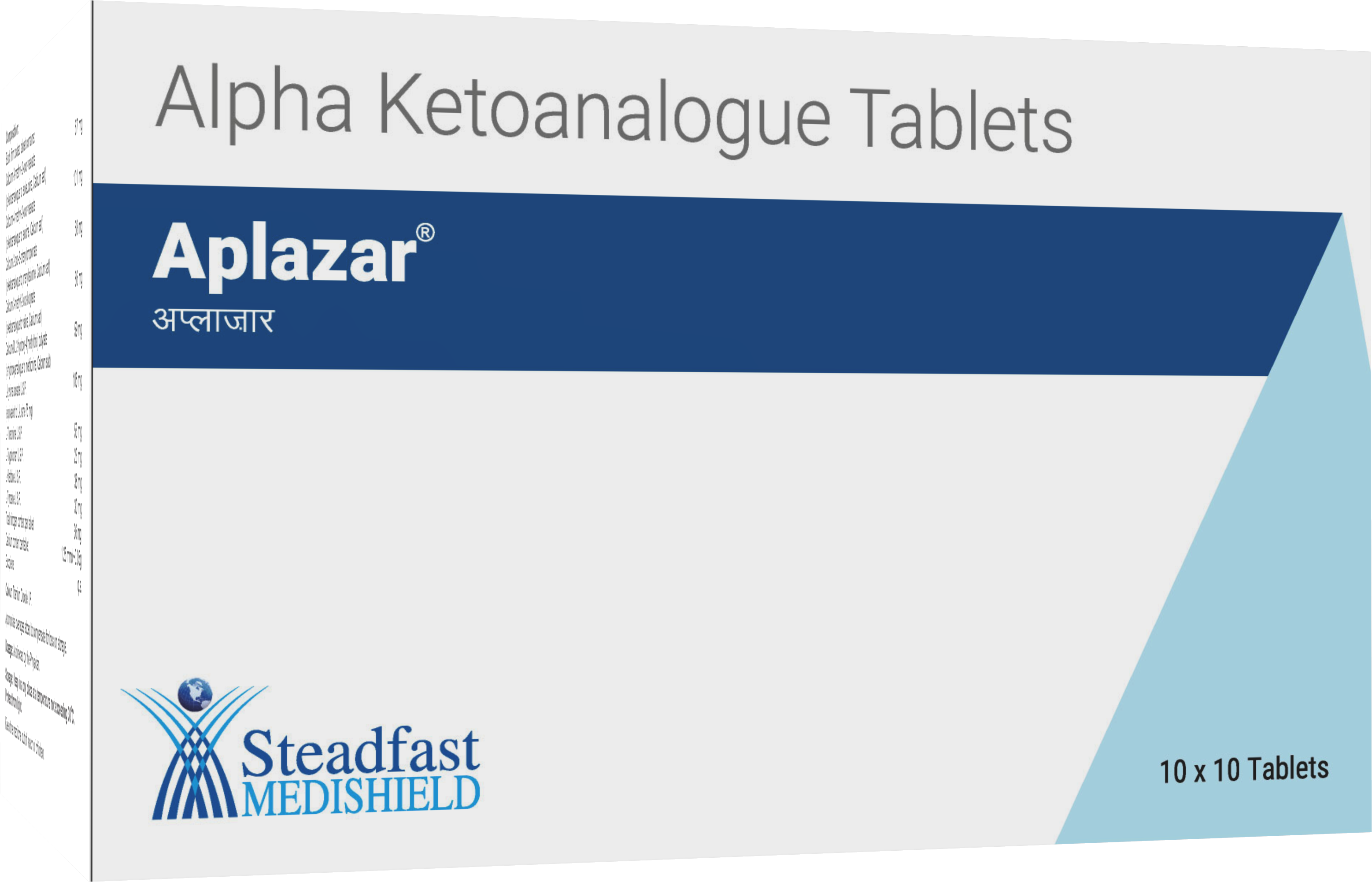
Description
APLAZAR contains all amino acids essential for uremic patients, five out of them are keto or hydroxyanalogue in the form of calcium salts. Therefore it allows reduction in the nitrogen supply and provides calcium. It is a medication for the treatment of chronic kidney disease patients on Conservative management therapy (CKD stage I, II, III). In combination with very low protein diet / low protein diet, it helps in delaying the progression of kidney disease in the Predialysis period.
Composition
One film-coated tablet contains:
-
- Calcium-3-methyl-2-oxovalerate (α-ketoanalogue of isoleucine,Calcium salt)67 mg
- Calcium-4-methyl-2-oxovalerate (α-ketoanalogue of leucine,Calcium-salt)101 mg
- 101 mg Calcium-2-oxo-3-phenylpropionate (α-ketoanalogue of phenylalanine,Calcium-salt) 68 mg
- Calcium-3-methyl-2-oxobutyrate (α-ketoanalogue of valine,Calcium-salt) 86 mg
- Calcium-DL-2-hydroxy-4-(methylthio)-butyrate α-hydro xyanalogue of methionine,Calcium salt)59mg
- L-lysine 75 mg
- L-threonine 53 mg
- L-tryptophan 23 mg
- L-histidine 38 mg
- L-tyrosine 30 mg
Indications
Prevention and therapy of damages due to faulty or deficient protein metabolism in chronic renal insufficiency in connection with limited protein in food of 40 g per day (for adults) and less; i.e. generally in patients with a glomerular filtration rate (GFR) below 25 ml/min.
Contraindications
Hypercalcemia, disturbed amino acid metabolism. In case of hereditary phenylketonurie it has to be taken into account that this product contains phenylalanine.
Precautions and Warnings
No experience has been made so far with the application in pregnancy and pediatrics. APLAZAR should be taken during meals to allow proper absorption and metabolism into the corresponding amino acids. The serum calcium level should be monitored regularly. An adequate supply of calories should be ensured.
Undesirable effects
Hypercalcemia may develop. In this case, it is recommended to decrease vitamin D intake. If the hypercalcaemia persists, reduce the dosage of APLAZAR as well as any other source of calcium.
Drug Interactions
Simultaneous administration of medicinal products that contain calcium (e.g. acetolyte) may trigger, or worsen, a pathological increase in the serum calcium level.
As the uremic symptoms improve under therapy with APLAZAR tablets, the dose of aluminum hydroxide administered should be reduced, as appropriate. The patient should be monitored for reduced levels of serum phosphate.
In order not to interfere with absorption, an appropriate interval should be observed between administration of APLAZAR tablets and medicinal products which form poorly soluble compounds with calcium (e.g. tetracyclines, quinolones such as ciprofloxacin and norfloxacin, preparations that contain iron, fluoride and estramustin). An interval of at least 2 hours should be observed between the intake of APLAZAR tablets and such preparations.
If administration of APLAZAR tablets leads to increased blood levels of calcium, the sensitivity to medicinal products which increase heart action (cardiac glycosides) and thus also the risk of cardiac arrhythmia is increased
Dosage and Administration
In general, unless prescribed otherwise, four to eight tablets are swallowed whole three times daily during meals. This dosage applies to adults (70 kg bodyweight) (1 tablet/5 kg body weight/day).
Storage
- Do not use APLAZAR after expiry date
- Keep out of the reach of children
- Do not store above 25°C
- Protect from moisture
Presentation
10 tablets packed in a blister, 10 such blisters packed in a carton
